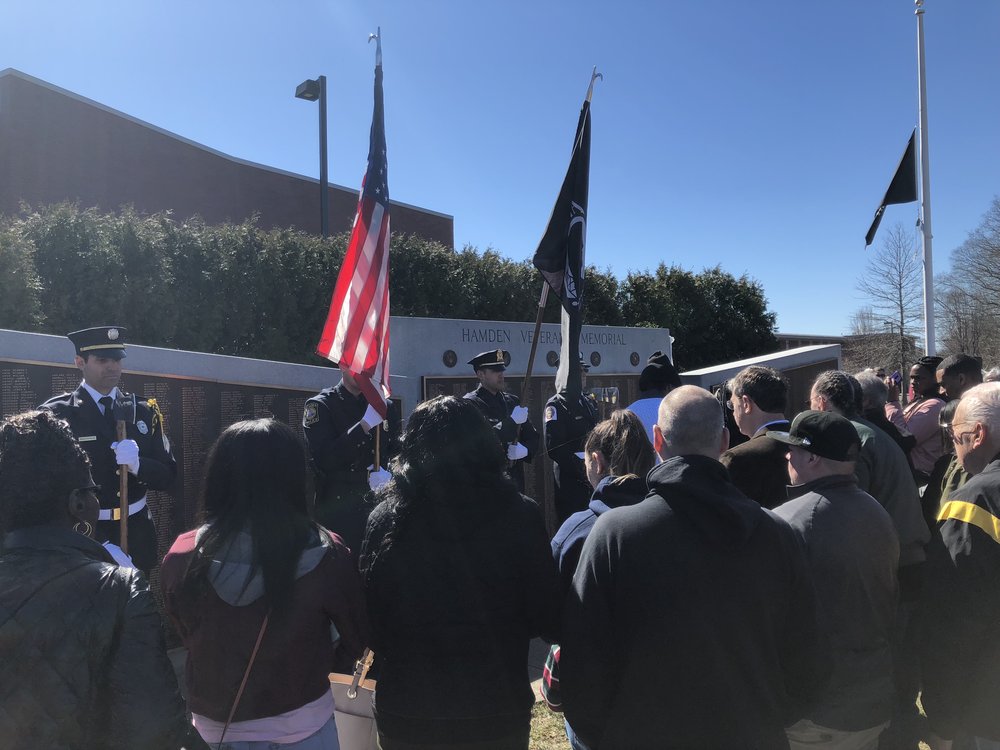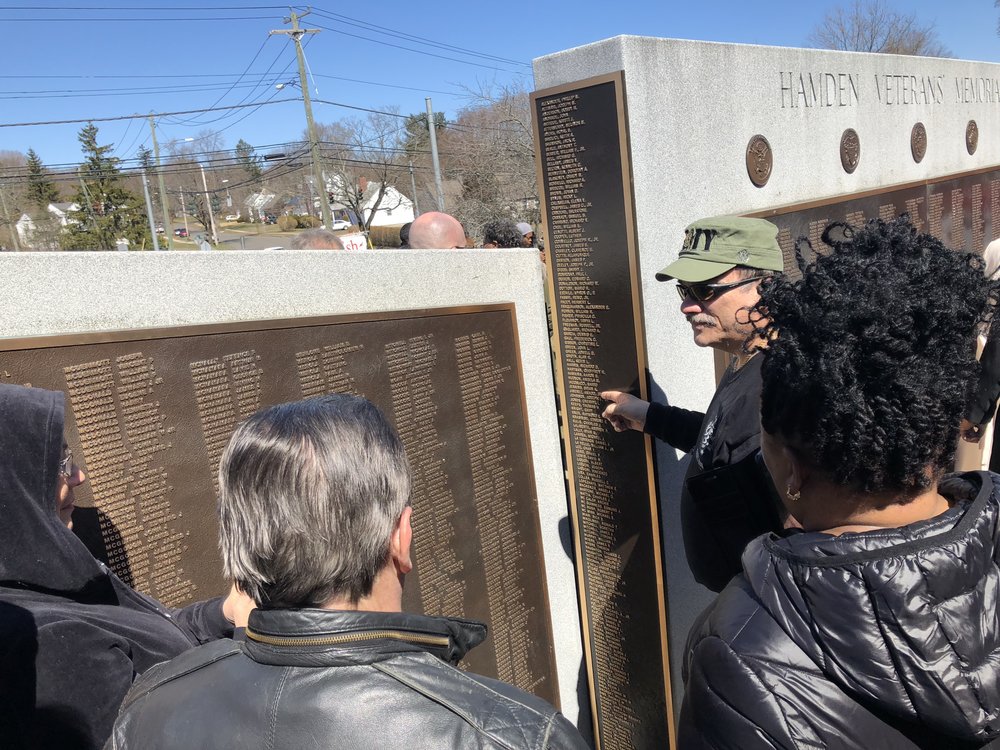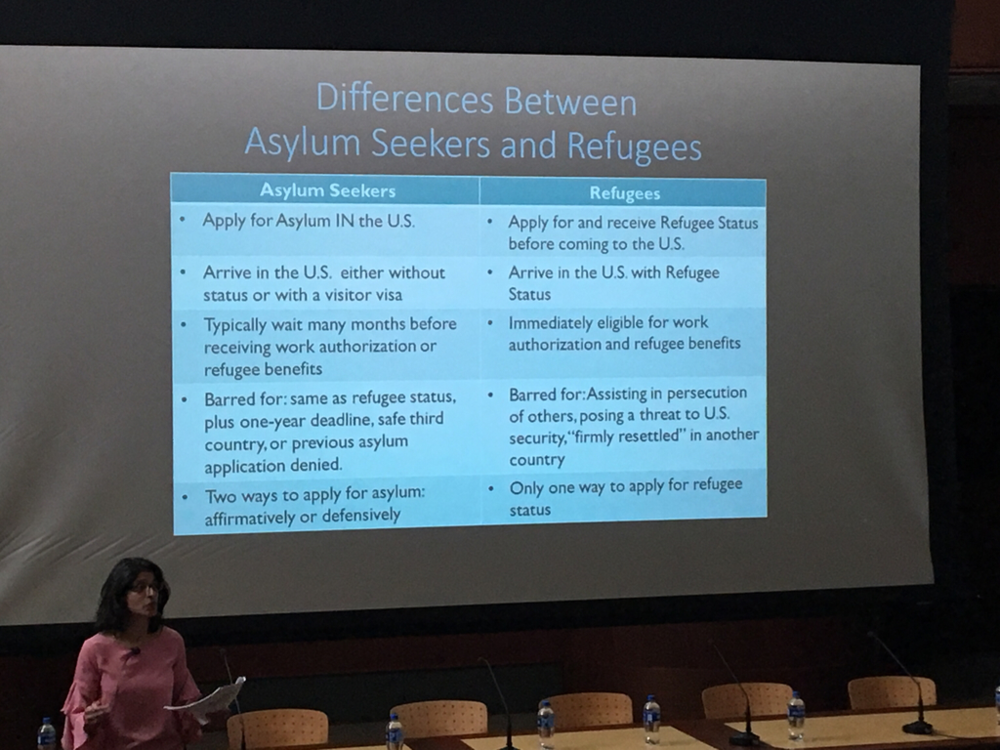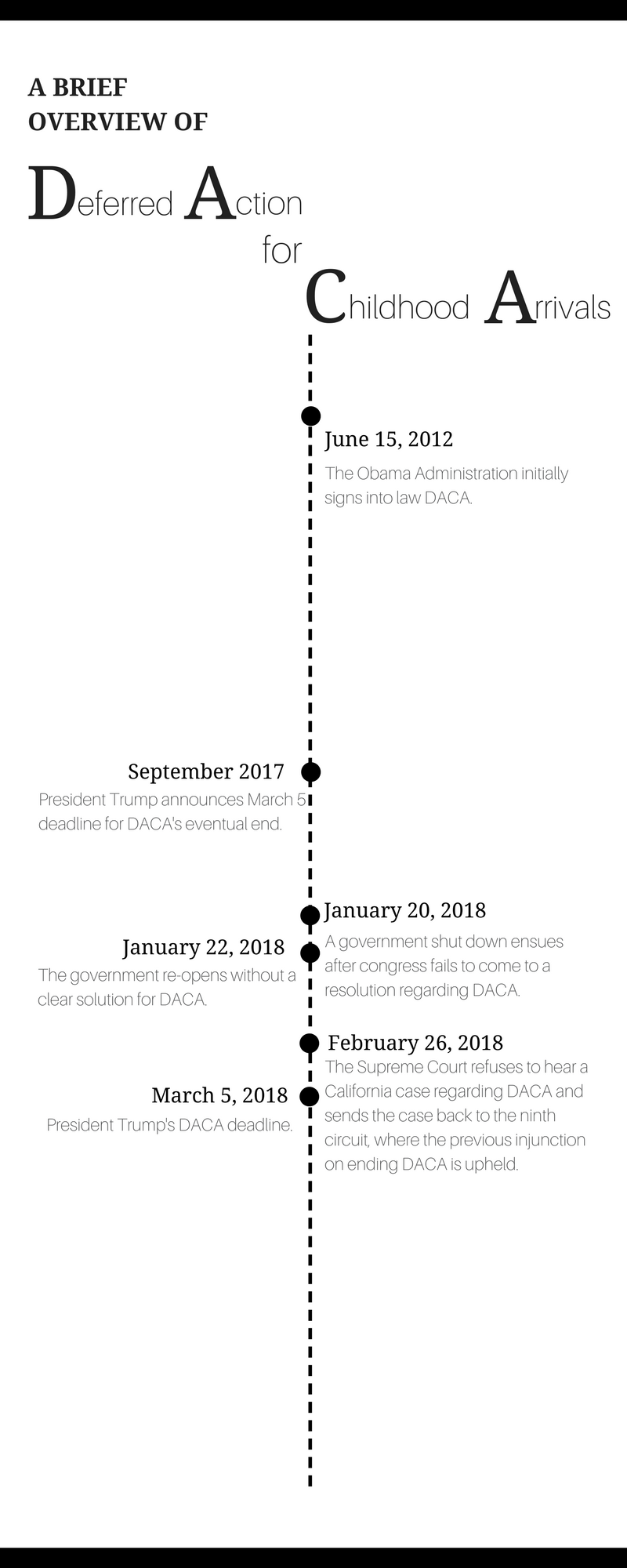
By Grace Manthey
Note: this article was updated on April 9 to clarify Sara MacDonough’s comments.
When Nicole Connery signed with Quinnipiac’s women’s ice hockey team for the 2012 season she didn’t know the suffering she would endure for the next three years.
Coaches from her hometown of Newmarket, Ontario, warned her when she told them where she was going. They told her they had heard things.
“But I was like, a lot of coaches yell,” Connery remembered.
Rick Seeley was Connery’s coach at Quinnipiac until her junior year when the university fired him in April 2015 for verbal and physical abuse of his players. But according to student surveys originally reported by Q30 Television, students had been reporting incidents since 2009.
“It could have been avoided earlier if our surveys were read and understood,” Connery said. “It’s the only thing I don’t understand of how those things were swept under the rug. I’ll never understand that.”
Every student athlete fills out a survey at the end of his or her season. After Connery’s first year she said she wrote long and honest answers detailing the abuse. But after a while she figured no one seemed to be listening.
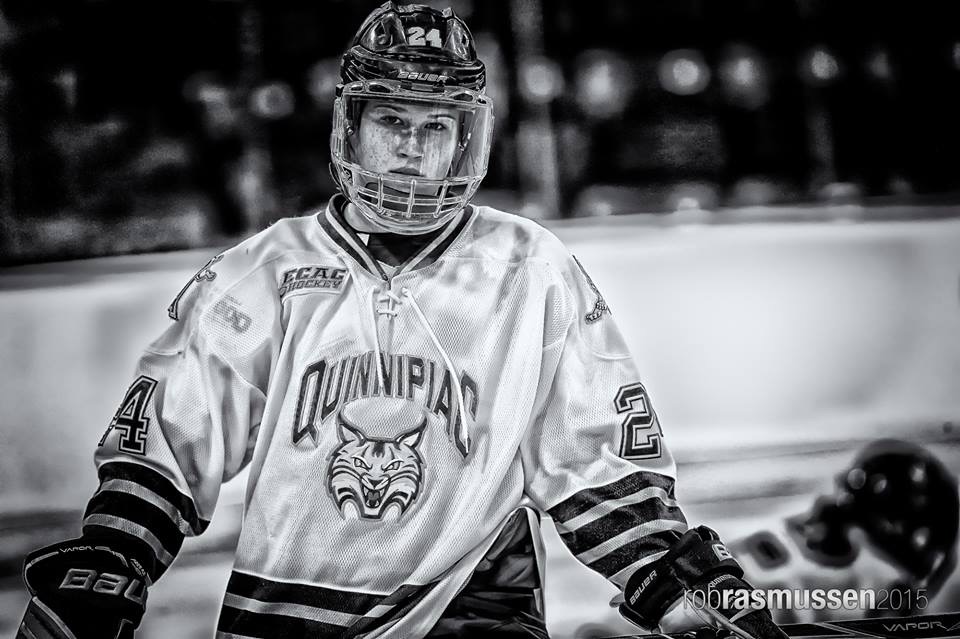
Photo courtesy of Nicole Connery
In her first survey, Connery described an incident where Seeley had the team run from the Mount Carmel campus to York Hill at 5 a.m. Afterward they had practice without an athletic trainer and a player tore a ligament in her knee.
After her sophomore year, Connery said since she didn’t feel like administrators were listening to the surveys. She just wrote that Seeley, “probably shouldn’t aim a slapshot at a player that did something wrong in practice.”
A more public incident at an NCAA tournament loss against Harvard sparked the end of the abuse.
Seeley not only started swearing at his players, but also grabbed one by the facemask. Another coach had to pull Seeley off of the player.
“Not only did we all see the incident but my parents, other parents, parents on the other team, and players on the other team saw this incident and was horrified,” said one player in her anonymous survey.
Former athletic director Jack McDonald, who was at Quinnipiac during the Seeley scandal, declined to comment on the incident.
The university hired Sarah Fraser in 2016, so she wasn’t around for Seeley’s firing. However, as the deputy director of athletics she is now one of the administrators who reads the athlete surveys.
Fraser is also the senior women administrator at Quinnipiac, a role designed to promote women within the school, according to the NCAA.
She said the student athlete surveys are anonymous because they allow student athletes to feel more comfortable being honest. While she said she feels strongly that they should stay that way, she also thinks the anonymity makes it hard for administrators to pinpoint problems.
“The challenge is not being able to follow up with somebody to get additional detail or verify how true something may be,” said Fraser.
This challenge may be part of why physical, verbal and emotional abuse is widespread in high-level sport – and why it’s been traditionally ignored. Players say that the culture demands that athletes tough it out for fear of retaliation or being seen as weak. So they don’t usually speak up. This leads to a communication barrier between athletes and coaches that can leave abusive behavior hiding in plain sight.
In fact, nearly half of all current or former athletes have experienced some negative interaction with a coach, whether they felt like the coach was picking on them, or crossed a line, according to an online survey of 62 current or former high school and college athletes in the U.S.

It’s a decades-long problem that has recently gotten the spotlight because players are starting to speak out.
Earlier this year, a Michigan court sentenced former USA Gymnastics (USAG) team doctor Larry Nassar on sexual assault charges. The statements from the hundreds of girls and women Nassar abused exposed the true abusive culture of USAG’s desire to win more medals. Meanwhile, a book published back in 1995 explained the abusive culture of elite gymnastics, yet the governing body did nothing until gymnasts started speaking up.
But most athletes do not speak up, according to the online survey. One anonymous respondent said, “we are taught to put our heads down and deal with it.” Many ignored negative interactions with their coaches. But that has consequences.
A study from 2008 found that emotional abuse, rather than verbal or physical, had the most negative effect on the well being of 14 elite, retired swimmers. The study defined emotional abuse as “sustained and repeated patterns of contact-free harmful interactions between an athlete and caregiver (coach) that resulted in emotional upset of the athlete.”
Quinnipiac fired Seeley for verbal and physical abuse, but the surveys also show signs of emotional abuse.
“He even told a member of the team that she was in fact nothing to this team and that she was worthless,” said one student athlete in a 2013 survey. “He told a girl … when she was ready to quit that if she goes home all she will be is a waitress and that she will have no life.”
The study also found emotional abuse was the least studied form of abuse, especially in athletics. But it’s one of the most common.
In another 2004 study, all interviewed athletes said their coach had abused them in some way. This resulted in them feeling worthless, lacking self confidence, depressed, humiliated or fearful.
The study went on to point out that these feelings lead to a “lack of belief in their own ability to perform,” which ultimately ends up making them play worse.
Also, the “only the strong survive/no pain, no gain” attitude is a myth according to Celia Brackenridge, the director of the Centre for Youth Sport and Athlete Welfare at Brunel University in West London.
“This attitude reflects institutional intolerance for maltreating athletes and overlooks the longer term harm that can result for ‘tough’ training and coaching regimes,” said Brackenridge in a 2010 keynote address at the “How Safe is Your Sport” conference.
Sara MacDonough, Quinnipiac University athletic trainer and mental health liaison said she couldn’t comment on the women’s ice hockey incident. But in general she thinks communication could be a way to foster a good relationship between athletes and coaches.
“If you can talk it out and understand where people are coming from and understand why they’re doing what they’re doing, then no one abuses their power and we can keep that check and balance in place,” she said.
According to former student athlete Connery, communication wasn’t always a solution for her. While her friends would go to other staff members to “let it out and cry,” Connery said she had no one she felt like she could trust. She said Seeley gave the impression that if anyone talked it would get back to him and they would be punished.
“For me it was hard because I never let myself flush out those feelings, what I had was just bottled up,” Connery said. “It’s not good for your health and you end up numb. Communication was just non-existent for me.”
Kelly Frassinelli, the field hockey coach and senior woman administrator at Southern Connecticut State University, said every school handles the role a little differently.
At Southern, Frassinelli’s role as SWA can include sitting down with athletes and talking with them about athletic, academic or social problems. As the field hockey coach she has regular meetings with her players to check in. However, in addition to communication on the athlete’s end, coaches must have a strong moral compass, Frassinelli said.
“I guess for me with all the stuff that’s going on in the world I just, I’ve never tolerated that. I’ve never felt that you know that in a role of power … you should ever take advantage of that role,” Frassinelli said.
She continued and said it might be easy to get lost in a moment, but that coaches have to remember there is life after sport.
“You have to stick by knowing that these are individuals you’re trying to make better people so that when they leave here, they might not be an Olympic athlete, but they’re going to be a good person,” she said.
Frassinelli recognizes that conversations between athletes and coaches will not always be pleasant, like after a game when a player has made a mistake.
“That’s where we encourage them to come talk to us,” she said. “And I know it’s hard for them sometimes but we’re going to give the honest answer whether you like the answer or not. But we’re going to try to communicate it.”
The line between being a tough coach and an abusive one is sometimes blurry, according to Frassinelli. Avoiding it totally may be impossible, but the important part is the way potentially abusive behavior is managed, she said. Coaches, athletes and administrations must build enough trust to do that.
“I think about how often is there oversight, how often are athletic directors or even associate ADs watching the interactions that are happening with their coaching staff and their student athletes just to check, just to make sure,” Frassinelli said.
Fraser, Quinnipiac’s SWA, said she believes administrator involvement is vital to understanding the cultures of the programs they oversee.
“I think the role is knowing enough about the programs you’re reading about going into the survey, so that most of what is said isn’t a surprise,” she said. “So if you’re doing your job [as an administrator] there shouldn’t be too many things there that you had no idea about because you’re close enough to the coaches, you’re close enough to the student athletes, you’re close enough to the program from just being around.”
However, Quinnipiac counselor Mary Pellitteri believes trust may be the wrong word to use when trying to avoid abusive behavior.
“Take trust and throw it right out the window,”Pellitteri said. “That’s a word that is way overused in my opinion because it’s something that has to be earned.”
Pellitteri said athletes need to not only get to know their coaches, but also get over the possible embarrassment of speaking up if they feel wronged.
“We feel like, ‘oh don’t be such a fuddy duddy’ or whatever, and that’s when it gets more and more uncomfortable,” she said. “So I think it’s more about trusting yourself to be able to stand up for things.”
However, as an athlete who has witnessed this behavior, Connery believes athletes sticking up for themselves can be a double-edged sword.
“They’re a wuss if they [admit it bothers them] and then people pull the whole ‘if you’re at a high level, if you’re a D1 athlete you need to be able to handle this,’” she said.
NCAA surveys mirror Connery’s thoughts.
In the most recent Growth, Opportunities, Aspirations and Learning of Students in college or GOALS survey, about half of female respondents said they were “very comfortable” going to their captains with team problems. The percentage increased from freshmen to seniors.
However, when asked how comfortable they were talking to coaches about team problems, a higher percentage of student athletes selected “somewhat comfortable” or “somewhat uncomfortable.”
When asked how comfortable they would be talking with administrators about problems on a team, over half were “somewhat uncomfortable” or “very uncomfortable” across all years.
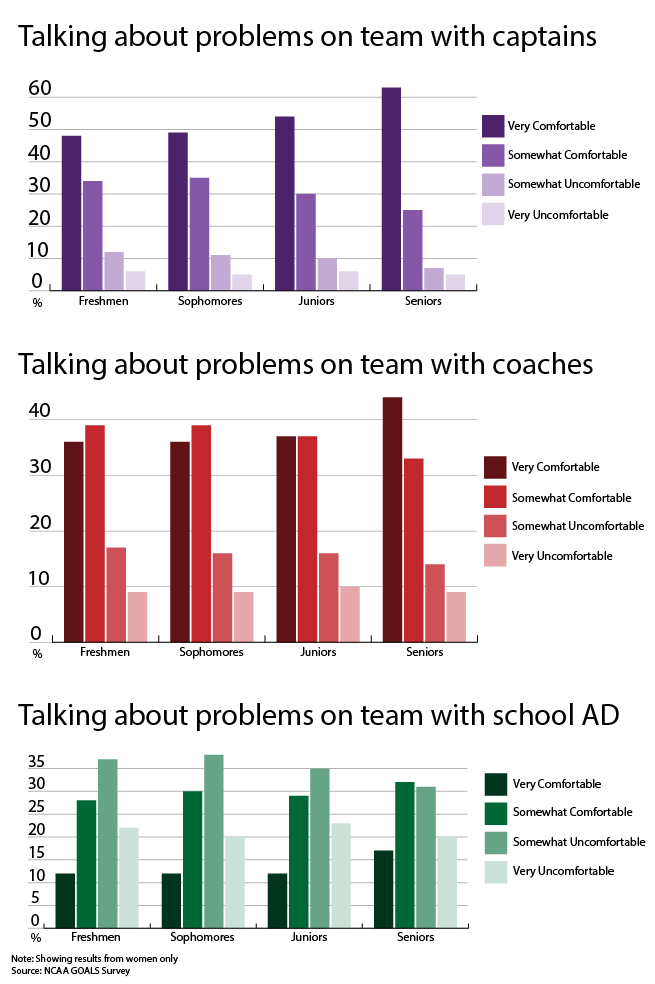
It was Connery’s captain, Morgan Fritz-Ward who faced discomfort and requested a meeting with administration. She and her team decided they were not going to let any more athletes suffer from their coach’s behaviors.
And once Seeley was gone, Connery, in her senior season found her love for hockey again.
“The coaches let me be a little more like, free, the way that I am,” said Connery. “And all the love poured in again.”
While the new head ice hockey coach and assistant under Seeley, Cassandra Turner, was not someone the players felt like they could go to in their time of suffering, Connery found a way to enjoy her senior season.
“In order for you to do better you have to forgive,” Connery said. “She’s very good at communicating with people … She’s very good at understanding people’s minds. I trusted that she could do well, could teach us well, could be a good coach and everything.”
MacDonough, the Quinnipiac trainer and mental health liaison, said that it’s important for coaches to have a healthy line of communication between them and their athletes and to not let too many personal feelings get in the way.
“We have a duty to check those behaviors, check our emotions at the door. If our student athlete isn’t performing well I do think that we have to hold them accountable and say ‘hey you’re slipping, what’s going on,’” she said.
So while student athletes can sometimes feel like no one is listening, experts say there is a way of managing problems between athletes and coaches. Abuse in women’s sports can be avoided with communication, accountability, respect and self esteem.
From Connery’s point of view, “you’ve gotta really value yourself … and know what you deserve and the kind of way you should be treated … put that value up higher.”
Reporter’s note: In the interest of full disclosure, Grace Manthey is a student athlete at Quinnipiac on the Acrobatics and Tumbling team.
